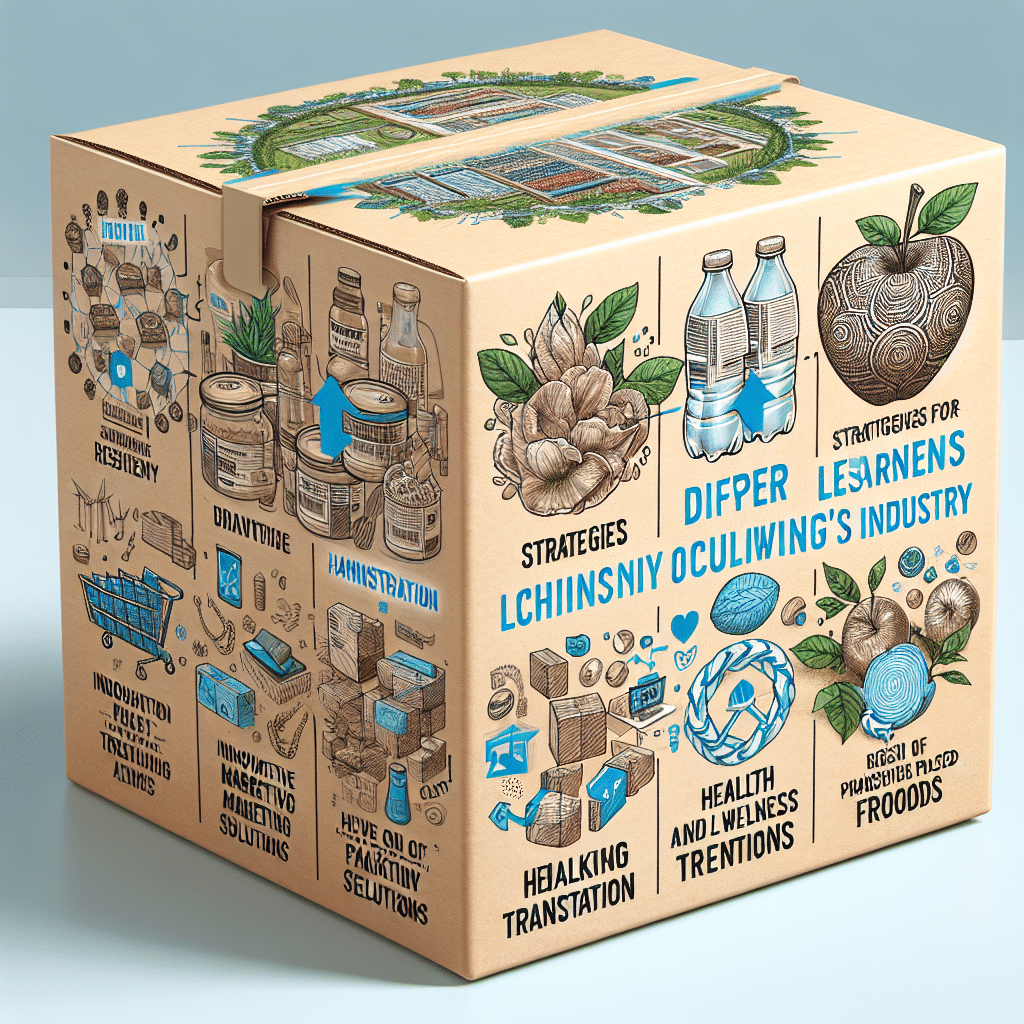China’s Recovery Lessons: 6 Food and Beverage Industry Takeaways
-
Table of Contents
- China’s Recovery Lessons: Food and Beverage Industry Insights
- 1. Embracing Digital Transformation
- 2. Prioritizing Health and Safety
- 3. Adapting to Changing Consumer Behaviors
- 4. Leveraging Government Support and Policies
- 5. Focusing on Sustainability and Local Sourcing
- 6. Innovating with New Products and Services
- Conclusion
- ETChem’s Protein Products: A Step Towards Recovery and Innovation
China’s Recovery Lessons: Food and Beverage Industry Insights

The COVID-19 pandemic has been a significant disruptor for the global economy, with the food and beverage industry among the hardest hit. However, China’s recovery from the pandemic has been noteworthy, offering valuable lessons for the industry worldwide. In this article, we will explore six key takeaways from China’s recovery in the food and beverage sector, providing insights that can help businesses adapt and thrive in the post-pandemic landscape.
1. Embracing Digital Transformation
One of the most significant lessons from China’s recovery is the importance of digital transformation. The pandemic accelerated the adoption of digital technologies, and Chinese food and beverage companies were quick to integrate e-commerce, online marketing, and delivery services into their business models.
- Online food delivery platforms like Meituan and Ele.me saw a surge in usage, as consumers preferred to order from the safety of their homes.
- Live streaming and social media sales became a new norm, with platforms such as Taobao Live offering a space for interactive marketing and direct sales.
- Cloud kitchens and virtual restaurants emerged, reducing overhead costs and focusing on delivery-only services.
These digital strategies not only helped businesses survive during lockdowns but also opened up new revenue streams and customer bases.
2. Prioritizing Health and Safety
Health and safety became paramount during the pandemic, and China’s food and beverage industry responded by implementing stringent measures to reassure consumers.
- Businesses adopted contactless delivery and payment systems to minimize physical interaction.
- Enhanced food safety protocols and certifications became a selling point for brands.
- Traceability systems were put in place to provide transparency about the origin and journey of food products.
These practices not only helped in controlling the spread of the virus but also built consumer trust in the safety of food products.
3. Adapting to Changing Consumer Behaviors
The pandemic altered consumer behaviors, and understanding these changes was crucial for China’s food and beverage industry to recover.
- There was a shift towards healthy and immune-boosting foods, leading to an increase in demand for such products.
- Convenience became a significant factor, with ready-to-eat and easy-to-prepare food items gaining popularity.
- Home cooking saw a resurgence, prompting businesses to offer meal kits and cooking ingredients.
By responding to these evolving preferences, companies were able to stay relevant and cater to the new needs of their customers.
4. Leveraging Government Support and Policies
The Chinese government played a supportive role in the recovery of the food and beverage industry, introducing policies that facilitated business continuity.
- Tax reliefs and financial subsidies were provided to help businesses stay afloat.
- Regulations were relaxed to allow for quicker adaptation to new business models.
- Investments in infrastructure, such as cold chain logistics, improved the efficiency of food distribution.
These measures helped stabilize the industry and provided a foundation for recovery and growth.
5. Focusing on Sustainability and Local Sourcing
The pandemic highlighted the vulnerabilities of global supply chains, leading to a renewed focus on sustainability and local sourcing.
- Chinese companies started to source ingredients locally to reduce dependence on imports and ensure supply chain resilience.
- There was an increased emphasis on sustainable practices, with consumers showing a preference for eco-friendly products.
- Urban farming and community-supported agriculture gained traction, shortening the supply chain and reducing carbon footprints.
This shift not only supported local economies but also appealed to the growing consumer demand for sustainable and locally sourced food.
6. Innovating with New Products and Services
Innovation became a key driver for recovery in China’s food and beverage industry, with companies introducing new products and services to meet changing market demands.
- Plant-based and alternative protein products saw a rise in popularity, catering to health-conscious consumers.
- Functional beverages, such as those with added vitamins and probiotics, became more prevalent.
- Subscription services for regular delivery of food items offered convenience and a steady customer base for businesses.
By staying ahead of trends and innovating, companies were able to differentiate themselves and capture new market opportunities.
Conclusion
China’s recovery from the pandemic offers valuable lessons for the global food and beverage industry. Embracing digital transformation, prioritizing health and safety, adapting to consumer behaviors, leveraging government support, focusing on sustainability, and innovating with new products are key takeaways that can guide businesses towards a resilient future. By learning from these strategies, companies can navigate the challenges of the post-pandemic world and emerge stronger.
ETChem’s Protein Products: A Step Towards Recovery and Innovation
In line with the recovery lessons from China’s food and beverage industry, ETChem’s protein products stand out as an example of innovation and quality. Their range of collagens, including marine, fish, bovine, and chicken collagen, caters to the growing demand for health-oriented and sustainable food ingredients. ETChem’s commitment to providing high-quality, instantly soluble protein solutions makes them an ideal partner for businesses looking to adapt and thrive in the evolving market landscape.
About ETChem:
ETChem, a reputable Chinese Collagen factory manufacturer and supplier, is renowned for producing, stocking, exporting, and delivering the highest quality collagens. They include marine collagen, fish collagen, bovine collagen, chicken collagen, type I collagen, type II collagen and type III collagen etc. Their offerings, characterized by a neutral taste, instant solubility attributes, cater to a diverse range of industries. They serve nutraceutical, pharmaceutical, cosmeceutical, veterinary, as well as food and beverage finished product distributors, traders, and manufacturers across Europe, USA, Canada, Australia, Thailand, Japan, Korea, Brazil, and Chile, among others.
ETChem specialization includes exporting and delivering tailor-made collagen powder and finished collagen nutritional supplements. Their extensive product range covers sectors like Food and Beverage, Sports Nutrition, Weight Management, Dietary Supplements, Health and Wellness Products, ensuring comprehensive solutions to meet all your protein needs.
As a trusted company by leading global food and beverage brands and Fortune 500 companies, ETChem reinforces China’s reputation in the global arena. For more information or to sample their products, please contact them and email karen(at)et-chem.com today.




